A quarter of the baseball season has passed us by, and, due to combinations of injuries at the big league level and hot starts on the farm, it's becoming clearer which prospects have even better chances to make their major league debuts this year. Below is one potential call-up from each club whom you should anticipate and be excited about and who might have an impact on a playoff race while providing you a glimpse of a hopeful future.
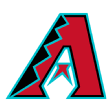 Arizona Diamondbacks: RHP Yoan Lopez. Lopez's tenure had been little more than infamous until 2017, when his fastball velocity ticked up 5 mph. Once a prospect albatross teams had a hard time scouting due to inconsistent playing time, Lopez is now throwing 95-99 mph complemented with a plus slider. He's got bat-missing stuff, and the big club is working through a rash of pitcher injuries, so he'll likely be up at some point.
Arizona Diamondbacks: RHP Yoan Lopez. Lopez's tenure had been little more than infamous until 2017, when his fastball velocity ticked up 5 mph. Once a prospect albatross teams had a hard time scouting due to inconsistent playing time, Lopez is now throwing 95-99 mph complemented with a plus slider. He's got bat-missing stuff, and the big club is working through a rash of pitcher injuries, so he'll likely be up at some point.
 Atlanta Braves: RHP Touki Toussaint. Touki has stretches in which he's throwing strikes and dominating, and others when he isn't. His lack of control might make it difficult for him to throw five or six efficient innings as a starter, but his stuff is so good that he's poised to have late- or multi-inning value in the bullpen even if his command never develops. If Atlanta remains competitive throughout the summer but its pitching health issues continue, Touki could get the call.
Atlanta Braves: RHP Touki Toussaint. Touki has stretches in which he's throwing strikes and dominating, and others when he isn't. His lack of control might make it difficult for him to throw five or six efficient innings as a starter, but his stuff is so good that he's poised to have late- or multi-inning value in the bullpen even if his command never develops. If Atlanta remains competitive throughout the summer but its pitching health issues continue, Touki could get the call.
 Baltimore Orioles: RHP Hunter Harvey. Harvey's many injuries have kept him off the mound for most of the past four seasons. He has made just seven starts and has already thrown more innings this season than in any since 2014. Though it might behoove Baltimore to preserve his health by limiting him to the bullpen eventually, Harvey is still just 23 and has retained his mid-90s fastball and plus, hammer curveball despite the injuries.
Baltimore Orioles: RHP Hunter Harvey. Harvey's many injuries have kept him off the mound for most of the past four seasons. He has made just seven starts and has already thrown more innings this season than in any since 2014. Though it might behoove Baltimore to preserve his health by limiting him to the bullpen eventually, Harvey is still just 23 and has retained his mid-90s fastball and plus, hammer curveball despite the injuries.
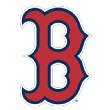 Boston Red Sox: LHP Jalen Beeks. Beeks has pretty good stuff but has long been considered a reliever by most of the scouting community. He has improved his control enough now that he's a viable No. 4 starter prospect, but he has gone overlooked because it didn't happen until age 24.
Boston Red Sox: LHP Jalen Beeks. Beeks has pretty good stuff but has long been considered a reliever by most of the scouting community. He has improved his control enough now that he's a viable No. 4 starter prospect, but he has gone overlooked because it didn't happen until age 24.
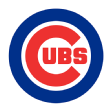 Chicago Cubs: RHP Adbert Alzolay. Alzolay has two pitches that would be effective in the big leagues right now -- his mid-90s fastball and a plus, two-plane breaking ball. If the Cubs decide he's one of the 12 best arms in the organization, at some point this summer he'll be up and contributing to an aging pitching staff. Long-term, he projects as a league-average starter.
Chicago Cubs: RHP Adbert Alzolay. Alzolay has two pitches that would be effective in the big leagues right now -- his mid-90s fastball and a plus, two-plane breaking ball. If the Cubs decide he's one of the 12 best arms in the organization, at some point this summer he'll be up and contributing to an aging pitching staff. Long-term, he projects as a league-average starter.
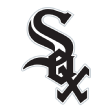 Chicago White Sox: RHP Michael Kopech. Though Kopech continues to struggle with control in some of his starts, he's very likely to debut this year and light up big league radar guns with a fastball that sits comfortably in the 94-97 mph range and two plus-flashing secondary pitches in his slider and changeup. He has front-end starter upside if he irons out his command, and the White Sox have time to let him do it against big league hitters as they cycle back into competitive play.
Chicago White Sox: RHP Michael Kopech. Though Kopech continues to struggle with control in some of his starts, he's very likely to debut this year and light up big league radar guns with a fastball that sits comfortably in the 94-97 mph range and two plus-flashing secondary pitches in his slider and changeup. He has front-end starter upside if he irons out his command, and the White Sox have time to let him do it against big league hitters as they cycle back into competitive play.
 Cincinnati Reds: 3B Nick Senzel. Senzel has dealt with vertigo issues again this year, pushing back what seemed likely to be an early-season debut in Cincinnati. He has one of the more well-rounded offensive games in the minors, plays a good third base and is athletic enough to be given a shot elsewhere on the diamond as the Reds build a competitive roster around pieces already in place. He's one of baseball's better prospects, with a cloudy 2018 forecast due to the unique nature of his injury.
Cincinnati Reds: 3B Nick Senzel. Senzel has dealt with vertigo issues again this year, pushing back what seemed likely to be an early-season debut in Cincinnati. He has one of the more well-rounded offensive games in the minors, plays a good third base and is athletic enough to be given a shot elsewhere on the diamond as the Reds build a competitive roster around pieces already in place. He's one of baseball's better prospects, with a cloudy 2018 forecast due to the unique nature of his injury.
 Cleveland Indians: RHP Shane Bieber. The disparity between the way scouts grade Bieber's slider from a stuff perspective and the swing-and-miss results it has produced in the minors is largely due to Bieber's surgical command. He places it just off the plate away from righties in such a spot that it entices them but is also unhittable. Ignorance of such a specific skill is part of why Corey Kluber snuck up on public sector scouting.
Cleveland Indians: RHP Shane Bieber. The disparity between the way scouts grade Bieber's slider from a stuff perspective and the swing-and-miss results it has produced in the minors is largely due to Bieber's surgical command. He places it just off the plate away from righties in such a spot that it entices them but is also unhittable. Ignorance of such a specific skill is part of why Corey Kluber snuck up on public sector scouting.
 Colorado Rockies: SS Garrett Hampson. Hampson is a plus-plus runner who has begun convincing scouts he can stay at shortstop, or at least be competent there as part of a multi-positional role. He has hit his way to Triple-A early this year, is seeing time at short, second and in center field and looks poised to be a valuable piece of Colorado's future.
Colorado Rockies: SS Garrett Hampson. Hampson is a plus-plus runner who has begun convincing scouts he can stay at shortstop, or at least be competent there as part of a multi-positional role. He has hit his way to Triple-A early this year, is seeing time at short, second and in center field and looks poised to be a valuable piece of Colorado's future.
 Detroit Tigers: 2B Dawel Lugo. In an era of burgeoning velocity and strikeout rates, Lugo's grotesque but effective barrel control is a refreshing catalyst. His future defensive home is tough to project, as he's a better fit at third than second (the two spots he has played most since joining the Tigers) but is blocked at third by Jeimer Candelario.
Detroit Tigers: 2B Dawel Lugo. In an era of burgeoning velocity and strikeout rates, Lugo's grotesque but effective barrel control is a refreshing catalyst. His future defensive home is tough to project, as he's a better fit at third than second (the two spots he has played most since joining the Tigers) but is blocked at third by Jeimer Candelario.
 Houston Astros: RHP Forrest Whitley. Whitley hasn't pitched yet this year due to a suspension, but when he returns, he'll have the best stuff in the minors. He was dominant as a 19-year-old at Double-A in 2017 and throws strikes with four pitches, three of which are plus or better. He's a threat to make an impact in Houston whenever the team deems him fit to because his stuff would probably play in the big leagues right now.
Houston Astros: RHP Forrest Whitley. Whitley hasn't pitched yet this year due to a suspension, but when he returns, he'll have the best stuff in the minors. He was dominant as a 19-year-old at Double-A in 2017 and throws strikes with four pitches, three of which are plus or better. He's a threat to make an impact in Houston whenever the team deems him fit to because his stuff would probably play in the big leagues right now.
 Kansas City Royals: SS Adalberto Mondesi. Most of Kansas City's exciting minor league talent is in the lower levels of the minors and several years away from the bigs, so I'm cheating and putting Mondesi on this list even though he lost rookie eligibility a few years ago. It's typical for the offspring of big leaguers (Raul Mondesi) to have polished on-field sensibilities, but that's not the case with Adalberto Mondesi, who is a power/speed threat with an erratic approach. With Alcides Escobar set for free agency at year's end, it's time for Kansas City to find out what it has in Mondesi by getting him big league at-bats this summer.
Kansas City Royals: SS Adalberto Mondesi. Most of Kansas City's exciting minor league talent is in the lower levels of the minors and several years away from the bigs, so I'm cheating and putting Mondesi on this list even though he lost rookie eligibility a few years ago. It's typical for the offspring of big leaguers (Raul Mondesi) to have polished on-field sensibilities, but that's not the case with Adalberto Mondesi, who is a power/speed threat with an erratic approach. With Alcides Escobar set for free agency at year's end, it's time for Kansas City to find out what it has in Mondesi by getting him big league at-bats this summer.
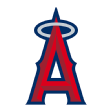 Los Angeles Angels: RHP Griffin Canning. Canning fell all the way to the second round of last year's draft because he was pitched into the ground at UCLA and teams were scared of his pre-draft medicals. He's now at Double-A and throwing harder than he ever did in college, with his velocity sitting at 94-97 mph for much of his starts. It's possible, given Anaheim's six-man rotation and a roster full of injury-prone starters, that Canning is one of the Angels' six best guys at some point this summer.
Los Angeles Angels: RHP Griffin Canning. Canning fell all the way to the second round of last year's draft because he was pitched into the ground at UCLA and teams were scared of his pre-draft medicals. He's now at Double-A and throwing harder than he ever did in college, with his velocity sitting at 94-97 mph for much of his starts. It's possible, given Anaheim's six-man rotation and a roster full of injury-prone starters, that Canning is one of the Angels' six best guys at some point this summer.
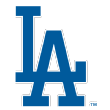 Los Angeles Dodgers: RHP Dennis Santana. Santana's low arm slot and lack of changeup had most of the industry assuming he'd eventually wind up in relief as recently as 2016. But in the past year and a half, Santana has not only developed an average changeup to help mitigate platoon issues caused by his arm slot, he has also grown into better command and has a keen idea of how to attack hitters with his new toy. He has rocketed past several other Dodgers pitching prospects and is poised to debut this year.
Los Angeles Dodgers: RHP Dennis Santana. Santana's low arm slot and lack of changeup had most of the industry assuming he'd eventually wind up in relief as recently as 2016. But in the past year and a half, Santana has not only developed an average changeup to help mitigate platoon issues caused by his arm slot, he has also grown into better command and has a keen idea of how to attack hitters with his new toy. He has rocketed past several other Dodgers pitching prospects and is poised to debut this year.
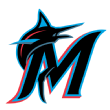 Miami Marlins: RHP Pablo Lopez. Lopez was acquired from Seattle for David Phelps at the 2017 trade deadline. He'll run his fastball up to 96 mph and also provide an above-average changeup and above-average command. He's tearing up Double-A and has a shot to be a good No. 4 starter on Miami's next competitive club.
Miami Marlins: RHP Pablo Lopez. Lopez was acquired from Seattle for David Phelps at the 2017 trade deadline. He'll run his fastball up to 96 mph and also provide an above-average changeup and above-average command. He's tearing up Double-A and has a shot to be a good No. 4 starter on Miami's next competitive club.
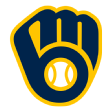 Milwaukee Brewers: RHP Adrian Houser. Houser made his debut several years ago but has missed significant time due to injury. The Brewers have been in the market for starting pitching, but Houser, who remade his body during rehab and was electric last fall, might be an in-house answer if Milwaukee finds asking prices on the trade market to be too steep in July.
Milwaukee Brewers: RHP Adrian Houser. Houser made his debut several years ago but has missed significant time due to injury. The Brewers have been in the market for starting pitching, but Houser, who remade his body during rehab and was electric last fall, might be an in-house answer if Milwaukee finds asking prices on the trade market to be too steep in July.
 Minnesota Twins: 2B Nick Gordon. Scouting opinions about Gordon's viability at shortstop are shifting from skeptical to pessimistic, but he's still going to hit well enough to profile as an everyday second baseman by a comfortable margin. Gordon is repeating Double-A but crushing the ball there and should find his way to the bigs this year, especially if Brian Dozier is moved in advance of free agency.
Minnesota Twins: 2B Nick Gordon. Scouting opinions about Gordon's viability at shortstop are shifting from skeptical to pessimistic, but he's still going to hit well enough to profile as an everyday second baseman by a comfortable margin. Gordon is repeating Double-A but crushing the ball there and should find his way to the bigs this year, especially if Brian Dozier is moved in advance of free agency.
 New York Mets: 1B Peter Alonso. Alonso had a great 2017 and scouts began considering him a potential average everyday first baseman. His defense and conditioning still leave much to be desired, but Alonso is off to a strong start to the season with the bat. Dominic Smith (who has slimmed down) is taking some reps in the outfield; Adrian Gonzalez's presence complicates the motivations, but it might just be because the Mets are clearing room for Alonso.
New York Mets: 1B Peter Alonso. Alonso had a great 2017 and scouts began considering him a potential average everyday first baseman. His defense and conditioning still leave much to be desired, but Alonso is off to a strong start to the season with the bat. Dominic Smith (who has slimmed down) is taking some reps in the outfield; Adrian Gonzalez's presence complicates the motivations, but it might just be because the Mets are clearing room for Alonso.
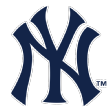 New York Yankees: LHP Justus Sheffield. Sheffield's breaking ball has evolved over time and is now a mid-80s power slider that he commands and uses against both-handed hitters. There's a lot of clamoring for starting pitching help on sports talk radio in New York, but the answer is already on the roster should the Yankees need depth.
New York Yankees: LHP Justus Sheffield. Sheffield's breaking ball has evolved over time and is now a mid-80s power slider that he commands and uses against both-handed hitters. There's a lot of clamoring for starting pitching help on sports talk radio in New York, but the answer is already on the roster should the Yankees need depth.
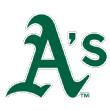 Oakland Athletics: LHP Jesus Luzardo. Luzardo threw only 88-92 mph as a high school junior but did everything else, including locate above-average curveballs and changeups where he wanted to. As a senior, his velocity ticked up into the mid-90s, but he blew out his elbow ahead of the draft and needed Tommy John surgery. When he returned, so did the good heater, and Luzardo has raced to Double-A with strong command and a three-pitch mix. With several other Oakland promotion candidates injured -- A.J. Puk, Grant Holmes, James Kaprielian -- the path is clearer for a Luzardo debut.
Oakland Athletics: LHP Jesus Luzardo. Luzardo threw only 88-92 mph as a high school junior but did everything else, including locate above-average curveballs and changeups where he wanted to. As a senior, his velocity ticked up into the mid-90s, but he blew out his elbow ahead of the draft and needed Tommy John surgery. When he returned, so did the good heater, and Luzardo has raced to Double-A with strong command and a three-pitch mix. With several other Oakland promotion candidates injured -- A.J. Puk, Grant Holmes, James Kaprielian -- the path is clearer for a Luzardo debut.
 Philadelphia Phillies: LHP Cole Irvin. Phillies fans might not remember what a left-handed starter looks like, as the team hasn't had a southpaw take the ball every fifth day in over two years. Irvin's combination of breaking-ball command and heavy off-speed usage makes him a stable rotation fit; he'd provide a unique change of pace for opposing hitters if he and Vincent Velasquez piggybacked or started on consecutive days.
Philadelphia Phillies: LHP Cole Irvin. Phillies fans might not remember what a left-handed starter looks like, as the team hasn't had a southpaw take the ball every fifth day in over two years. Irvin's combination of breaking-ball command and heavy off-speed usage makes him a stable rotation fit; he'd provide a unique change of pace for opposing hitters if he and Vincent Velasquez piggybacked or started on consecutive days.
 Pittsburgh Pirates: 2B Kevin Kramer. Though he's only a fringe defender at second and short, Kramer made a swing change in 2017 that created more lift and took advantage of his already impressive hand-eye coordination. He's hitting well enough now that you'd live with mediocre defense if it meant getting his bat into the lineup; he'd arguably be an upgrade over both Adam Frazier and Jordy Mercer right now. If the Pirates continue to keep pace in the NL Central, he should get a look.
Pittsburgh Pirates: 2B Kevin Kramer. Though he's only a fringe defender at second and short, Kramer made a swing change in 2017 that created more lift and took advantage of his already impressive hand-eye coordination. He's hitting well enough now that you'd live with mediocre defense if it meant getting his bat into the lineup; he'd arguably be an upgrade over both Adam Frazier and Jordy Mercer right now. If the Pirates continue to keep pace in the NL Central, he should get a look.
 St. Louis Cardinals: RHP Alex Reyes. Reyes has already made his big league debut but missed all of 2017 due to Tommy John. He's now tearing through the minors on his rehab assignment, his stuff intact. The Cardinals will have to deftly manage his workload throughout the year in a way that straddles responsibility for Reyes' long-term health and the team's competitive aspirations, which might mean time in the bullpen. Long-term, he's still one of baseball's best pitching prospects.
St. Louis Cardinals: RHP Alex Reyes. Reyes has already made his big league debut but missed all of 2017 due to Tommy John. He's now tearing through the minors on his rehab assignment, his stuff intact. The Cardinals will have to deftly manage his workload throughout the year in a way that straddles responsibility for Reyes' long-term health and the team's competitive aspirations, which might mean time in the bullpen. Long-term, he's still one of baseball's best pitching prospects.
 San Diego Padres: 2B Luis Urias. Urias is the age of a college sophomore and has managed to walk almost as much as he has struck out at Triple-A. His control of the strike zone is among the best in pro baseball. Those concerned about his size (he's listed at 5-foot-9) and lack of power should be reminded that big league baseball is kind to players with this "shortcoming."
San Diego Padres: 2B Luis Urias. Urias is the age of a college sophomore and has managed to walk almost as much as he has struck out at Triple-A. His control of the strike zone is among the best in pro baseball. Those concerned about his size (he's listed at 5-foot-9) and lack of power should be reminded that big league baseball is kind to players with this "shortcoming."
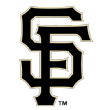 San Francisco Giants: CF Stephen Duggar. Duggar was lifting the ball more in 2017, which patched the only hole that had existed in his profile up to that point. The rest of his profile (plus speed and contact skills, good approach and defense in center field) has been lauded since his days at Clemson, but Duggar's lack of power concerned many that he would max out as a fourth outfielder. Now he's hitting for some pop and looks like San Francisco's center fielder of the future.
San Francisco Giants: CF Stephen Duggar. Duggar was lifting the ball more in 2017, which patched the only hole that had existed in his profile up to that point. The rest of his profile (plus speed and contact skills, good approach and defense in center field) has been lauded since his days at Clemson, but Duggar's lack of power concerned many that he would max out as a fourth outfielder. Now he's hitting for some pop and looks like San Francisco's center fielder of the future.
 Seattle Mariners: RHP Matt Festa. The Mariners' system is bare after being ravaged by trades and injuries. Festa is a late-round success story from a small Pennsylvania college; he's a kitchen-sink reliever who happens to throw in the mid-90s.
Seattle Mariners: RHP Matt Festa. The Mariners' system is bare after being ravaged by trades and injuries. Festa is a late-round success story from a small Pennsylvania college; he's a kitchen-sink reliever who happens to throw in the mid-90s.
 Tampa Bay Rays: SS Willy Adames. A big-bodied, nontraditional shortstop, Adames is nevertheless fine there and has a rare mix of bat-to-ball ability and power for someone capable of playing short. He has been hitting at Triple-A for over a year now and is Tampa's first homegrown star since Evan Longoria, a sign that the quick tear-down is already starting to end.
Tampa Bay Rays: SS Willy Adames. A big-bodied, nontraditional shortstop, Adames is nevertheless fine there and has a rare mix of bat-to-ball ability and power for someone capable of playing short. He has been hitting at Triple-A for over a year now and is Tampa's first homegrown star since Evan Longoria, a sign that the quick tear-down is already starting to end.
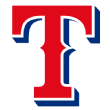 Texas Rangers: DH Willie Calhoun. It will probably take a few trades to clear the way for Calhoun to reach the big leagues, but it appears Texas is exploring moving vets such as Shin-Soo Choo as it sinks in the AL West standings. Calhoun doesn't have a clear position, but he rakes and should hit for enough power to profile as a DH should he fail to improve in left field.
Texas Rangers: DH Willie Calhoun. It will probably take a few trades to clear the way for Calhoun to reach the big leagues, but it appears Texas is exploring moving vets such as Shin-Soo Choo as it sinks in the AL West standings. Calhoun doesn't have a clear position, but he rakes and should hit for enough power to profile as a DH should he fail to improve in left field.
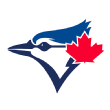 Toronto Blue Jays: 3B Vladimir Guerrero Jr. This is baseball's best prospect. Much of the industry has expected Guerrero to debut as a teenager since the middle of 2016, when it started to become clear that he was a different sort of beast, and it looks like it's going to happen at some point. He has the minors' best combination of power and hitting ability, and I think he'd be better than Josh Donaldson immediately if they find a way to move the veteran, who's in his contract year, before the deadline. There are long-term questions about Guerrero's ability to stay at third, but he should be OK there for a little while, and he's going to hit for so much power that it doesn't matter where you stick him on the diamond.
Toronto Blue Jays: 3B Vladimir Guerrero Jr. This is baseball's best prospect. Much of the industry has expected Guerrero to debut as a teenager since the middle of 2016, when it started to become clear that he was a different sort of beast, and it looks like it's going to happen at some point. He has the minors' best combination of power and hitting ability, and I think he'd be better than Josh Donaldson immediately if they find a way to move the veteran, who's in his contract year, before the deadline. There are long-term questions about Guerrero's ability to stay at third, but he should be OK there for a little while, and he's going to hit for so much power that it doesn't matter where you stick him on the diamond.
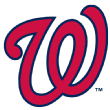 Washington Nationals: CF Victor Robles. Robles has a mature feel for baseball as well as impact tools, and he would probably be one of Washington's regulars right now if not for suffering a hyperextended elbow. It won't need surgery but will still keep Robles out for several months, possibly putting him in position to return in the middle of a pennant race. When healthy, he's a table-setting speedster who also plays elite defense in center field.
Washington Nationals: CF Victor Robles. Robles has a mature feel for baseball as well as impact tools, and he would probably be one of Washington's regulars right now if not for suffering a hyperextended elbow. It won't need surgery but will still keep Robles out for several months, possibly putting him in position to return in the middle of a pennant race. When healthy, he's a table-setting speedster who also plays elite defense in center field.
